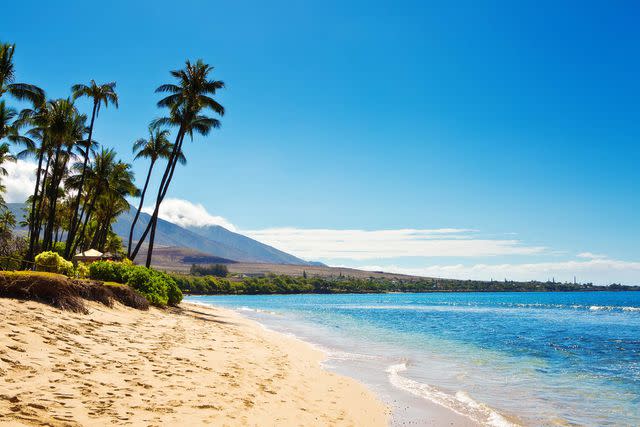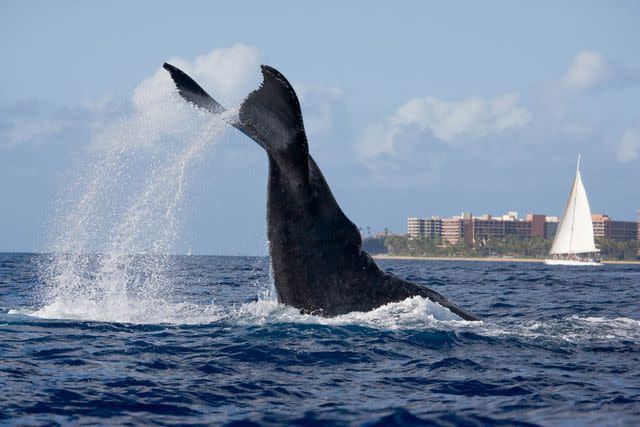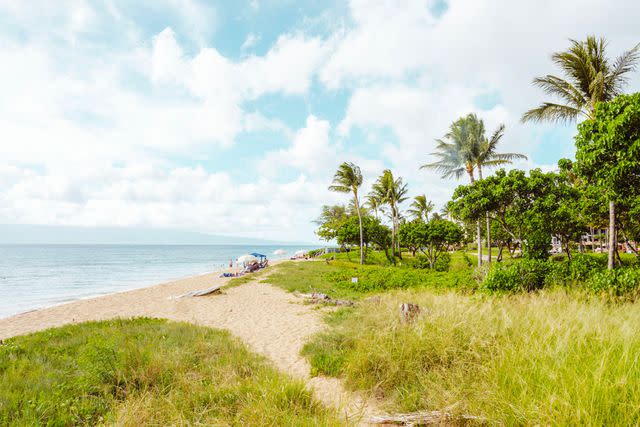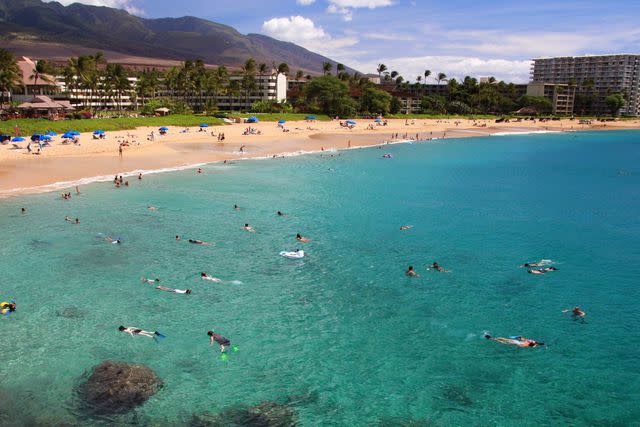This Crescent-shaped Beach Was Named the Best in the U.S. — and It's 3 Miles Long
Can you guess which state is home to the best beach in the country?

YinYang/Getty Images
Maui's famously scenic shoreline has more than 30 miles of beaches, some with dramatic black sand, others with dreamy stretches of soft white sand, and one of the only green sand beaches in the world (Papakōlea Beach in South Maui). But it is the stunning — and historic — Kāʻanapali Beach that took this year's top prize for the best beach in the U.S., according to Tripadvisor's latest ranking.
"When travelers envision a beach vacation, their thoughts often turn to warm weather, a beautiful white sand beach, a calm ocean, open spaces, outdoor activities, water sports, relaxation, rejuvenation, and reconnection (with themselves and others). Kāʻanapali Beach offers all those things, as well as award-winning resorts and restaurants, and great shopping," Marilyn Clark, a member of T+L's A-List of travel advisors and owner of Lighthouse Travel, told Travel + Leisure. "Kāʻanapali Beach was once a retreat for Hawaiian royalty, and it has won numerous awards. It’s a great place to create some lasting memories."

YinYang/Getty Images
The crescent-shaped three-mile stretch of soft white sand along Maui's West Coast, north of Lāhainā town, has long been a magnet for travelers — with its clear blue waters, home to coral reefs and vibrant marine life. Snorkeling and diving off of Kāʻanapali Beach (meaning 'Kāʻana cliff' in Hawaiian) are favorite pastimes of visitors, who might spot colorful tropical fish, green sea turtles, and broad stingrays.
"Kāʻanapali Beach is a great place to do a lot of the things people want to enjoy during a beach vacation," said Clark. "It offers some of the island’s best snorkeling, swimming, stand-up paddleboarding, and sailing — and it’s a good place to learn to surf and/or scuba dive. For all the golf enthusiasts who visit Hawai’i, Kāʻanapali is home to two 18-hole golf courses."
Even those who prefer to stay on dry land are treated to spectacular whale watching. "Maui is one of the best places in the world to go whale watching because its shallow, warm water, especially in the Au’au Channel, attracts thousands of humpback whales every season," said Clark.
Every year between December and April, the channel between neighboring Lānaʻi, Moloka'i, and Maui, known as the Maui Nui Basin, becomes a protected sanctuary where migrating humpback whales come to breed. This makes Kāʻanapali Beach and Lāhainā one of the best places to see mothers and their young calves breaching the surface of the ocean, easily visible from the shore.
"Whales can be viewed in the distance from Ka’anapali Beach, but going on a whale-watching tour is an even better option. There’s nothing like seeing a whale breaching nearby," said Clark, who noted that all boats stay 100 yards away from whales. (Clark also added that while you can see whales from November through May, you can see the most during peak season which falls between mid-January to the end of March.)

M Swiet Productions/Getty Images
Set against the west Maui Mountains, this beach has drawn visitors for more than 60 years with its powdery white sand, swaying palms, and kid-friendly activities. In fact, Hawai'i welcomed its first master-planned resort community, the Kāʻanapali Resort, in 1962 on Kāʻanapali Beach.
A couple of years later, the property's then-owners, American Factors, ran a promotional movie about the region, calling it the "Polynesian Riviera" and "the new queen of resorts." Those who wished to experience it could hop on a charter flight from Honolulu Airport and land directly on an airstrip next to the beach. Today, the Kāʻanapali coast is home to two championship golf courses and several Maui resorts, including the Westin Kāʻanapali Ocean Resort Villas.
"Kāʻanapali is a resort area that attracts a lot of people, but there are also places where you can enjoy some quiet time, including some areas on the beach, spas where you can relax both physically and mentally, out in the ocean, or just sitting on your balcony enjoying a tropical cocktail and a stunning sunset," said Clark. "It is a family-oriented area, but it offers great options for couples as well, and it attracts a lot of honeymooners."
But besides its year-long appeal to vacationers, Kāʻanapali Beach is also steeped in Hawaiian culture and history.

Taylor McIntyre/Travel + Leisure
“Today, the area known as Kāʻanapali Beach is separated in half by Black Rock, or Puʻu Kekaʻa, which means ‘the rolling hill’ in reference to observing stones rolling down from the top without any known cause. There was a heiau, or temple, located at its summit. It is revered as a sacred spot; the place where a soul leaps into eternity,” Pōmaikaʻi Krueger, cultural advisor at the Westin, told T+L.
Nowadays, the self-guided Kāʻanapali Historical Trail & History and Legends Tour educates travelers about the most significant events and legends related to Kāʻanapali Beach. For something more hair-raising, though, head to Pu'u Kekaʻa, which is located in front of the Sheraton Maui Resort, where every night just before sunset, the hotel hosts a thrilling cliff-diving ceremony. A local diver emerges on the black lava rocks lighting torches along the way as he approaches the edge. He then jumps about 30 feet into the water. The ceremony pays tribute to King Kahekili, who ruled Maui in the 18th century.
“Kahekili gained respect from many warriors for his leaps from Puʻu Kekaʻa, as most were frightened of the spirits who lived in the area,” Krueger added.

ejs9/Getty Images
Kāʻanapali Beach has been facing serious erosion challenges for the past four decades that culminated last year when, after a series of strong south swells, parts of the beach’s paved walkway along the coastline collapsed into the ocean.
“The rate and severity of damage has accelerated, likely due to sea level rise and recent record high water levels,” reads the executive summary of Kāʻanapali Beach Restoration Project, prepared by Hawaii’s Department of Land and Natural Resource. “Modern sea level rise is a result of human-induced global atmospheric and ocean warming. Changes in storm severity have also been attributed to climate change.” As part of the beach restoration project, the state has brought in 75 cubic yards of sand into the area, but the community is still working on long-term solutions to preserve the country's best beach.
For more Travel & Leisure news, make sure to sign up for our newsletter!
Read the original article on Travel & Leisure.

